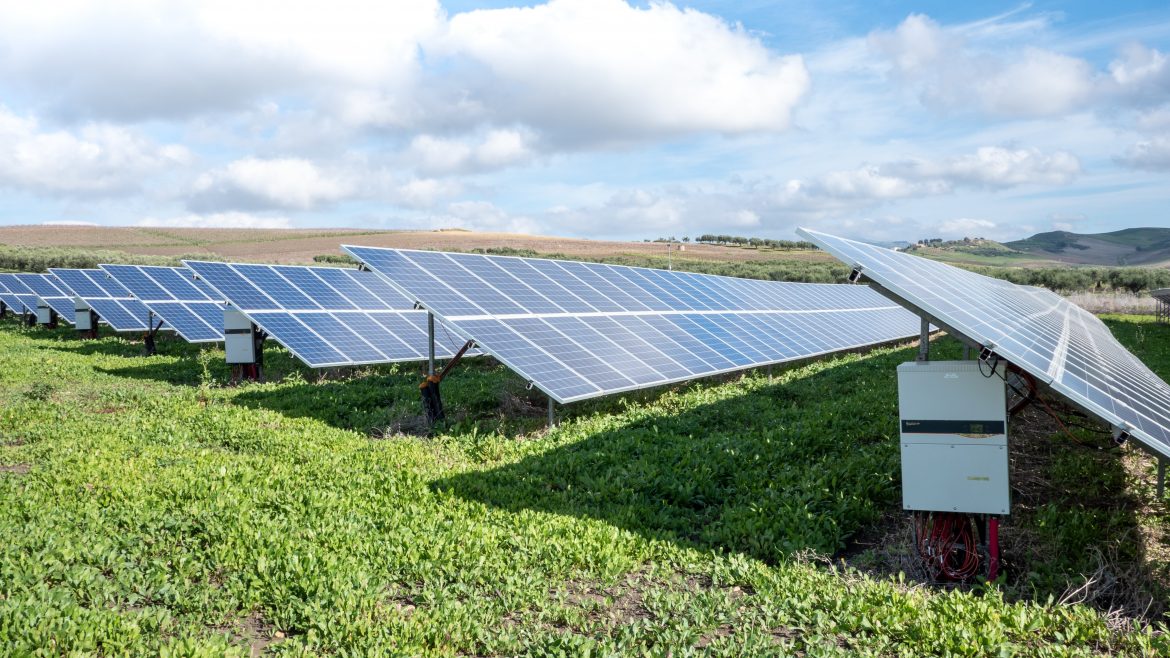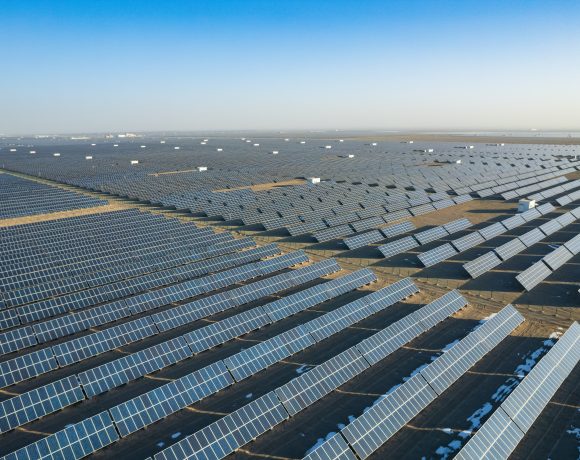- Japanese Prime Minister Yoshihide Suga announced that his government will almost double the 2030 greenhouse emission reduction target from 26% to 46%, and achieve zero emission by 2050.
- Industry and government are collaborating to improve the efficiency of larger perovskite solar cells, next-generation energy storage systems, and energy production using algae biomass.
The world is rapidly moving toward decarbonisation. According to a recent report, the global green technology and sustainability market size was valued at $8.79 billion in 2019, and is projected to grow more than fivefold to $48.36 billion by 2027.
Japan is no bystander. Prime Minister Yoshihide Suga announced that his government will almost double the target for reducing greenhouse gas emission from 26% to 46% by 2030, before going down to zero emission by 2050. To achieve these goals, various industry, academia and government collaborations are in progress to accelerate the translation of cutting-edge technologies – ranging from novel solar cells and hydrogen storage systems to even algal biomass – into practical applications.
Next-generation solar cells invented in Japan
EneCoat Technologies Co., a start-up from Kyoto University developing materials for perovskite solar cells (PSCs) and modules for commercial use, is collaborating with Mitsubishi Materials Corp. to improve the durability of PSCs for commercialisation. The university spin-off has also received financial investment from Mitsubishi Materials, which positions environment and energy as one of its core pillars.
PSCs, invented in Japan in 2009, are anticipated to gain widespread use as the next-generation solar cell because of their thin, bendable characteristics that enable flexibility for installation in various places. Their low production cost is another advantage. In November 2020, Prof. Koji Segawa of the University of Tokyo and others achieved a power conversion efficiency of 28%, for the size of a one square centimeter PSC. The conversion efficiency of conventional silicon-based solar cells is about 14-20%, while its theoretical limit is said to be 29%.
Industry-government collaboration is also underway to improve the durability and efficiency of larger PSCs. Panasonic Corp., in cooperation with the New Energy and Industrial Technology Development Organization (NEDO), a government-funding agency, confirmed an energy conversion efficiency of 16.09% for a large-size PSC with an aperture area of 802 cm2 (30 cm long x 30 cm wide x 2 mm thick) in January 2020. The large-area, lightweight, and high-conversion efficiency characteristics were achieved by using glass substrates and a coating method based on inkjet printing. This module will enable highly efficient solar power generation at locations where it is difficult to install conventional solar panels such as on building walls. By lowering the process cost and weight of large-area perovskite modules, Panasonic and NEDO aim to create new markets for solar cells.
From Japan to Europe and back, a highly adaptive hydrogen storage system
Demand for electricity, as well as output from renewables such as solar or wind power plants, fluctuates constantly. In order to adapt to these fluctuations, electric power companies take multiple measures to adjust the supply and demand in response to various cyclic types of fluctuations. The ability of a power system to maintain continuous service in the face of rapid and large swings in supply or demand is called “flexibility”. As the use of renewable energy spreads, the need for such flexibility services is increasing.
Exergy Power Systems, Inc., a University of Tokyo spin-off, develops, produces, and manufactures next-generation energy storage systems utilising its proprietary hydrogen storage batteries and technology for instantaneous output and controlling large amounts of power. The company’s storage battery has excellent rapid charge/discharge characteristics and durability, which enable IoT solutions to easily adjust to sudden current fluctuations originating from renewable energy sources. Currently, the company has projects with its technology of large-capacity storage systems, mainly in European countries.
Moreover, in 2019, Exergy Power Systems entered into a capital and business alliance with the Kansai Electric Power Co., (KEPCO). The two companies are combining KEPCO’s knowledge and expertise in the electric power business with Exergy’s storage battery system with a view to creating new services in Japan and abroad. Furthermore, last year, Yamanashi Prefecture announced an investment of 150 million yen in the Tokyo-based start-up. The municipality and Exergy are jointly conducting research and demonstration experiments for the stable supply of renewable energy in Kofu City.
Algal biomass, fueling the future with no environmental burden
Algae, which are aquatic organisms such as seaweeds that have the ability to photosynthesise, produce oil as a by-product of photosynthesis. In the process, they absorb carbon dioxide (CO2), amounting to an annual 140 tons per hectare. Therefore, if algae can be mass-produced, it will be possible to secure fuel with almost no environmental burdens.
The Chitose Group founded in Japan is a group of venture companies with advanced technologies for utilising microorganisms such as algae, animal cells, and other microscopic organisms. The group has large-scale algae cultivation technology that makes maximum use of photosynthesis from solar energy. Chitose Bio Evolution Pte., headquartered in Singapore, and ENEOS Holdings, Inc., Japan’s biggest oil refiner, are embarking on a collaboration to expand the scale of algae biomass cultivation in Malaysia for algae-derived products for a decarbonized society.
Separately, Euglena Co., a biotechnology start-up leading the way in the use of Euglena, a type of microalgae, has also ventured into the development of biofuels. In 2019, the company entered into a comprehensive partnership with Denso Corp., a major auto parts supplier, that is developing the microalgae Coccomyxa KJ in collaboration with Kyoto University under a project commissioned by the Ministry of Agriculture, Forestry and Fisheries. By realising biofuels from various microalgae, the two companies seek to diversify the procurement of algae as raw materials for a stable supply of biojet and biodiesel fuel.
In addition, Euglena’s joint technology development with Itochu Corp., Mitsubishi Chemical Corp., and others for the mass cultivation of algae which will be used to produce biojet and biodiesel fuel has been selected by NEDO in 2020 to receive funding. Going forward, the companies and universities involved in the project will together accelerate the establishment of a consistent supply chain from raw material procurement to fuel manufacturing technology and fuel supply, as well as a production technology for microalgae as a raw material for fuel, with the goal of starting operation of a commercial biofuel manufacturing plant by the end of 2025.
In order to create a society that makes extensive use of algae biomass, it is critical to have a stable, large-scale production of biomass as well as a wide variety of products to ensure its consumption.
Chitose Bio Evolution and ENEOS are working to expand the scale of algae cultivation in Malaysia, an equatorial country with an abundance of solar energy. At the same time, they are also developing fuels, chemicals, feed, and functional materials derived from algae. Meanwhile, Euglena and Denso are combining their respective agricultural and engineering knowledge to commercialise a wider selection of algae-based food products and cosmetics.
Towards achieving goals
A revised aggressive policy toward a decarbonised society will require full-scale, collective efforts by industry, academia, and government. Collaboration between companies, universities, and start-ups will continue to increase in order to solve common challenges.
References:






NO COMMENT